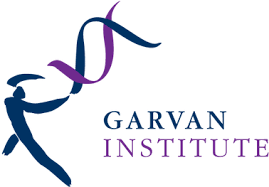 The Garvan Institute of Medical Research has selected Dell EMC to deliver an HPC system for Garvan’s Data Intensive Computer Engineering (DICE) group, designed to push scientific boundaries and transform the way genomic research is currently performed in Australia.
The Garvan Institute of Medical Research has selected Dell EMC to deliver an HPC system for Garvan’s Data Intensive Computer Engineering (DICE) group, designed to push scientific boundaries and transform the way genomic research is currently performed in Australia.
Genomics, the study of information encoded in an individual’s DNA, allows researchers to study how genes impact health and disease. When the first human genome was sequenced, the project took over 10 years and cost almost US$3 billion. In recent years, extraordinary advancements in DNA sequencing have made the analysis of whole human genomes viable, and today, Garvan can sequence up to 50 genomes a day at a base price of around US$1,000.
Specifications:
- Across 47 Dell EMC PowerEdge servers, the solution provides clinical researchers with the genomics processing capacity of 1,632 Intel Xeon Scalable Processor cores
- 10 Intel Arria 10 GX FPGAs
- 122,880 NVIDIA Tesla V100 CUDA cores
- 15,360 NVIDIA Tensor cores to accelerate HPC and AI techniques
- 744TB of NVMe to accelerate in memory processing of genome data sets
- 41TB DDR4 RAM Memory
- 530TB usable capacity CephFS storage
- The HPC cluster is connected by 25 GbE and 100 GbE
Garvan’s genomic research focuses on understanding how variations in each of our DNA sequences contributes to health and disease. Through genome sequencing and analysis of people, with and without a range of conditions, Garvan’s research is helping to drive precision medicine. This enables the delivery of the right medicine to the right person at the right time, helps to assess predisposition for a disease, and predicts adverse reactions to certain drugs. Garvan has already seen significant success in identifying the DNA changes that underpin cancer and immune, cardiac, mitochondrial and other diseases.
To store, analyse and use this genomic information effectively, Garvan requires large computational resources and data storage. Each person’s genomic data contains over six billion bases and around five million genetic variants, taking up to 700 hours to process. The Dell EMC HPC infrastructure, built on 14th generation PowerEdge technologies, with NVIDIA GPU-accelerated computing and Intel® Xeon® Scalable Processoand FPGA, enables researchers to leverage best-of-breed architecture that can handle scientific workloads and push the boundaries of what’s possible. The new infrastructure will expand on Garvan’s existing on-premise system–not only supporting traditional computational analysis and simulation but offering extensive big data analytics and deep learning capabilities.
Supporting the Future of Life-Saving Precision Medicine
The investment will underpin several of Garvan’s flagship projects and scientific collaborations, accelerating research at a lower cost than historical solutions.
For example, Garvan’s genome sequencing capability is core to the Kinghorn Centre for Clinical Genomics, the Garvan Weizmann Centre for Cellular Genomics (Garvan’s single-cell genomics research centre) and the Sydney Genomics Collaborative, a AU$24 million investment by the NSW Government to foster genomics research in NSW and encourage national and international collaborations. As part of this program, Garvan established the Medical Genome Reference Bank (MGRB), containing 4,000 whole genome sequences to use as controls in disease research. To be able to support easy interrogation of this cohort, a team of Garvan researchers led by Dr Warren Kaplan (chief of informatics at Garvan’s Kinghorn Centre for Clinical Genomics), built Vectis, a scalable, open-source genome analysis program. It’s designed to empower biologists, clinicians, researchers and data scientists to store, analyse and query the complex genomic data–ultimately, uncovering genetic mechanisms of disease.
Garvan’s genome sequencing capability is also crucial to precision cancer medicine initiatives at Garvan, including the Lions Kids Cancer Genome Project (Genome Power) and the Australian Genomic Cancer Medicine Program, a series of clinical trials led by Professor David Thomas (Garvan and The Kinghorn Cancer Centre). Through its Molecular Screening and Therapeutics (MoST) clinical trials, the Australian Genomic Cancer Medicine Program seeks to uncover new treatment options for patients across Australia who have rare cancers or have exhausted other treatment options. The program compares the genome of each patient–their DNA code–with the genome of the patient’s tumour to discern the underlying cause of their cancer and target treatment accordingly. It was recently announced that the program would receive $50 million in Australian Government funding, to bring the program to every state and territory in Australia.
Supporting these projects is the DICE HPC infrastructure, which provides memory intensive HPC compute nodes, deep learning (AI) GPU compute nodes and a scalable design that allows for mixed workloads and extensive research data storage. With the new infrastructure in place, Garvan researchers can conduct specific analysis at faster speeds. This allows them to take research findings and apply them to patient treatment as soon as possible.
The technology has transformed the way we do science,” Dr. Kaplan says. “It’s given us the ability to transform Garvan into a data-driven medical research institute, and the more genomes we sequence, the more we’re able to use that information to inform future studies.”
Dr. Kaplan says the technology is a critical driver for the institute to achieve its mission of transforming the lives of people across Australia.
We want to change the direction of medicine and have a life-changing impact on people’s health. We see genomics as the key to driving this transformative change, and we couldn’t achieve this without the computing infrastructure to make it possible. Genomics requires significant computational power to analyse the data, and that’s why we partnered with Dell EMC,” he says. “The team at Dell EMC was able to meet every single one of our requirements for the technology, offering a solution to meet our needs now and into the future.”



